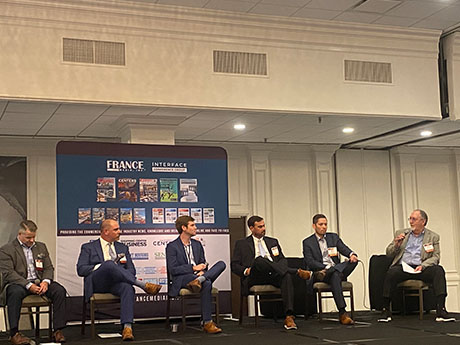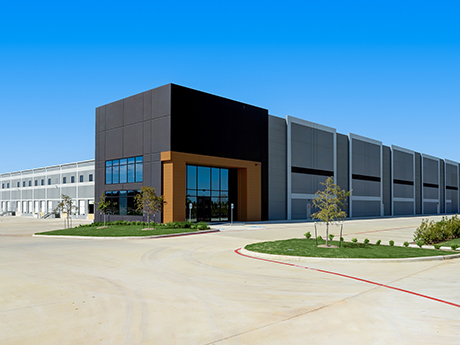By Taylor Williams
The Houston industrial market has generally performed quite well over the past few years, even as a global pandemic, record inflation and hard-hitting interest rate hikes have rocked the commercial real estate industry as a whole.
Demand for industrial space has held firm due to rebounding energy prices and expansions in infrastructure and traffic at Port Houston, as well as organic population growth and economic diversification that has elevated the market’s role as a distribution hub. According to data from CBRE, the market has a 6 percent vacancy rate and posted 5.1 million square feet of positive net absorption through the first three quarters of 2023.
The volume of new construction was on track to outpace absorption in 2023 when the report was released. But that was not the case in 2021 and 2022, years in which net absorption equaled and exceeded 7 million square feet, respectively. New deliveries totaled approximately 5.6 million and 5.4 million square feet in each of those years, driven not only by the aforementioned factors but also by a temporary uptick in demand for e-commerce services in the wake of the pandemic.
In any market or asset class, when absorption exceeds supply growth, it speaks to healthy demand and fundamentals. The Houston industrial sector is no exception. But at the annual InterFace Houston Industrial conference that took place in November 2023 at the Westin Oaks Hotel, a panel of investment sales brokers and leasing agents expressed mild concern that the market may have expanded a bit too quickly during that stretch. Pat Duffy, principal and director of Colliers’ Houston office, moderated the discussion.
What Changed in 2023
When 2023 began, the impacts of the seismic disruptions of the past three years started to come to a head. While the industry had long since put COVID-19 in its rearview mirror by that time, the economy had yet to burn off all of the pandemic stimulus money, and the federal government had resumed its profligate spending habits.
These events set the stage for the Federal Reserve to further implement interest rate hikes. Hikes officially began in March 2022 and unfolded at aggressive intervals, including several hikes of 75 basis points as the Fed stepped up its game in the face of political pressure to bring prices down.
The impact of that activity came to a head in 2023 as Americans were relishing their return to normalcy and unleashing pent-up demand on the shopping, dining and entertainment sectors. The need for e-commerce services modestly diminished, taking demand for industrial space along with it.
While these shifts were taking shape, Amazon announced that it would be canceling or pausing construction on a number of industrial projects around the country. The e-commerce giant’s tacit admission that it had overextended its real estate footprint was all the confirmation that smaller users needed to concede that they too could have unnecessarily large footprints. As a result, the inventory of sublease space began to grow.
Sublease Situation
The panelists addressed the industrial sublease market in Houston in terms of what it signals about the sector’s overall outlook.
“There’s a lot of sublease [space] hitting the market right now, something we haven’t seen much of over the last couple years when tenants wanted more space than they needed due to supply chain issues,” said Peyton Easley, president of Titan Commercial, a full-service real estate firm based in Houston. “Those deals are very challenging, but it’s a big trend we’re seeing — tenants wanting to give back their spaces.”
According to CBRE’s data, there was approximately 6.9 million square feet of industrial space available for sublease in the fourth quarter of last year.
Duffy then connected the local trend of growing sublease space to the moves made by Amazon at the national level.
“Amazon slammed on the brakes about 18 months ago,” he said. “I’ve got a son in the factory automation business, and 80 percent of his company’s business was Amazon — four years’ worth of robotics orders totaling more than $1 billion were canceled after they were already in progress.”
Duffy added that while global supply chain snarls in 2022 and 2023 ultimately brought more business from West Coast ports to Port Houston — fueling the local industrial sector in the process — some users undoubtedly bit off more than they could chew in response to the disruption.
“Companies were leasing more space than they needed at the time and thinking they would fill it up,” concurred panelist Beau Kaleel, executive vice president at Cushman & Wakefield’s Houston office. Kaleel then proceeded to give some examples of recent sublease deals.

“Wayfair leased a 1 million-square-foot building near the airport that it intended to occupy, then put on the sublease market, and it’s still available,” he said. “There’s another 500,000 square feet that Article Clothing put on the sublease market near Port Houston, and a company called Snow Joe that provides lawn maintenance equipment leased another 500,000 square feet by the port. Both of those buildings were recently subleased, with Exxon taking one and food distributor Cargill taking the other. So that’s real positive.”
Kaleel also agreed that sublease deals tend to be very challenging to negotiate. Further, he said that while these deals aren’t necessarily indicative of an unhealthy market, they do reflect overexpansion on the part of some users. At the same time, he and other panelists acknowledged that the speed at which two of those spaces were absorbed after being listed for sublease is undoubtedly an indicator of overall robust demand.
“It’s healthy for the market to have that kind of ebb and flow instead of constantly having a shortage of space,” said Jim Autenreith, executive vice president and managing director at Moody Rambin.
“There’s likely to be a decrease in supply in 2024, so having some sublease space on the market isn’t necessarily a bad thing since there’s definitely demand to support it,” added Easley.
“Being at 1 percent vacancy is almost as bad as being at 10 percent vacancy,” concluded Kaleel. “It’s hard to get deals done all the way.”


